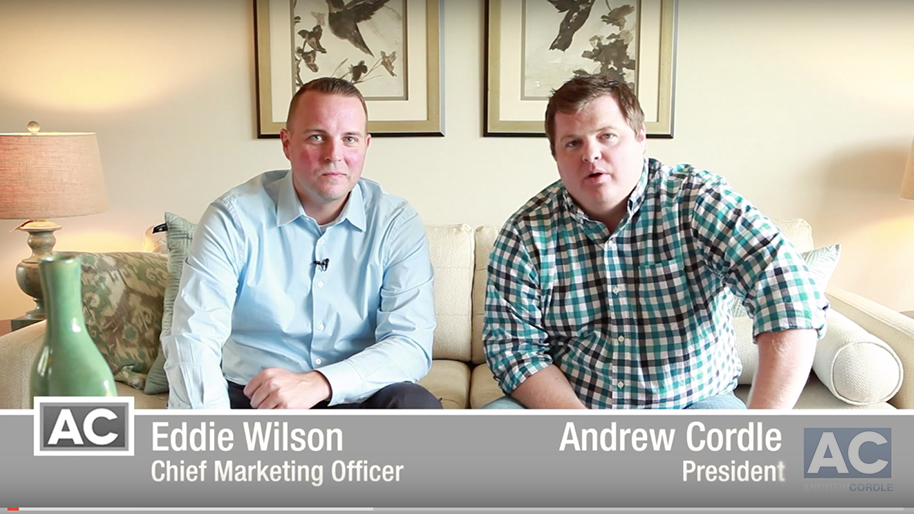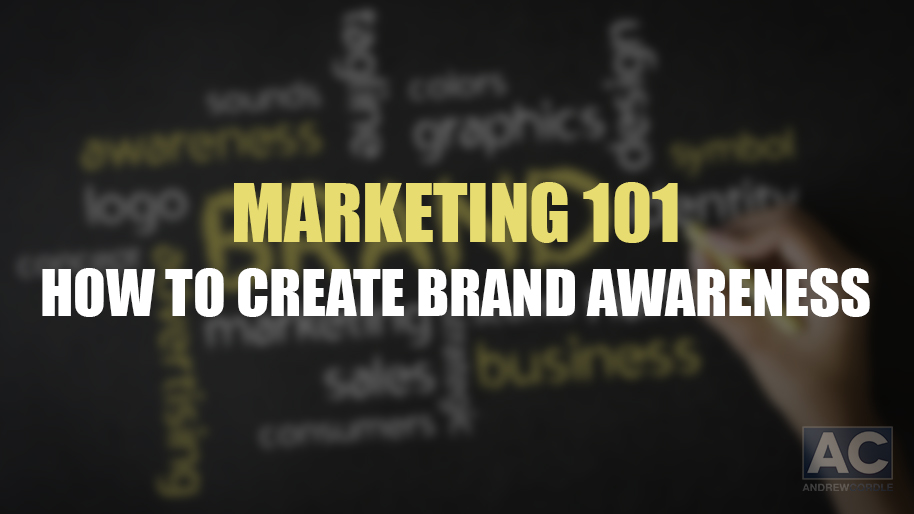
The REI Academy was created to give real estate investors of any experience level the opportunity to learn from the best. Whether you’re a beginner investor who’s never done a flip, a mid-level investor who does 5-10 properties a year, or an experienced investor looking for that extra profit, the REI Academy is the place for you! We’re different than all of the other real estate educators. Andrew and Eddie not only educate, but they practice what they preach! Come join us at our REI Rehab Academy and REI Marketing Academy this month in Atlanta, GA and separate yourself from your competition. Become one of the many investors who can proudly claim that Andrew Cordle and his team helped me become a better investor! REI Rehab Academy will be held Wednesday and Thursday, August 27 and 28, 2014 at: Holiday Inn Atlanta-Perimeter/Dunwoody 4386 Chamblee Dunwoody Rd Atlanta, GA 30341 This year alone, our company will buy, fix, and sell roughly 60 properties. Efficient systems are paramount and we’ll teach you our systems and processes. This academy is unique in that half of the time will be in a classroom environment but the other half will be out on the physical job sites. We’ll take you to properties that are in all stages from demo to the finished product. At our REI Rehab Academy, you’ll also learn: 1. How to make $30,000+ per rehab 2. Every stage of the rehab with hands-on, on-site training 3. Understanding the true costs of a rehab 4. Locating and hiring the best contractors for your investment 5. Clearly defining your scope of work As well as much, much more! On Friday and Saturday, August 29 and 30, 2014, we will be holding our REI Marketing Academy for two full days at the same location. The REI Marketing Academy sets us apart from other real estate investing educators. We’ll show you how to market and brand yourself so that you shine brighter than your competitors. We’ll show you the difference between inbound and outbound marketing. Other things you’ll learn at our REI Marketing Academy: 1. Market your business in a cost-effective and efficient manner 2. Branding yourself, your products, and your business 3. We’ll teach you our strategies that will help you make $3,000 more per deal 4. Enhance your website and social media pages 5. You’ll learn the top ten ways to find properties 6. How to attract the right kind of customers As well as much, much more! Typically, this academy is reserved solely for our students who are already part of the mentoring program, but we are offering the last 5 seats to anyone interested in registering. The cost of the REI Rehab Academy is $1,000/per student. The REI Marketing Academy is also $1,000/per student. However, for those students who would like to attend both...
Read More »

How do you begin creating “brand awareness” for your products? Over time, one needs to establish positive brand awareness that promotes the possibility of the purchase of your product in the future. The initial impression of your brand is of utmost importance! Beyond this, however, are all of the future impressions that may be formed regarding your brand. BRAND AWARENESS Your brand awareness measures a consumer’s knowledge of your product. Challenges in creating brand awareness: 1. Do potential customers even know that you exist? 2. Is your product better? 3. Why pay more for your products rather than from a less expensive alternative? Maintaining Brand Awareness: Ensure your brand promise is clear. Be simple, be direct, and by all means, be consistent. Focus on creating a well-conceived brand name. Even the most clever branding strategy will fall flat if the name you seek to brand is poorly conceived. Understand the competition – No one operates in a vacuum. While originality is important, it’s critical to be aware of your competitors’ branding strategies. Set branding goals. You can’t very well determine your success if you don’t have a benchmark against which to measure it. Know where you want to go and when you want to get there. Remain committed to the brand while being flexible. Branding success doesn’t occur overnight; it takes commitment to maintain focus and build loyalty. But that doesn’t mean strategy changes might not be necessary along the way, so be open to tweaking your approach as necessary. BRAND EQUITY: Brand equity is strategically crucial but it’s also difficult to quantify. There have been a multitude of experts who have developed tools to analyze certain assets but there is no universally accepted manner in which to measure it. One must fight to maintain a reserved mental space in the consumers mind. There are four aspects of brand equity: 1. brand loyalty 2. awareness 3. association 4. quality perception Business Week ranks brand equity: Sony: -16% Sony spent $1.6 billion on advertising last year, according to Advertising Age magazine, but it wasn’t enough to stem Sony’s slide in global brand value. Its drop of 16% is all the more troubling as rival Samsung passed the Japanese giant in brand value while spending far less on ads. According to Interbrand’s Jan Lindemann, who directed the ranking, Sony’s brand value has dropped because it gave up leadership in MP3 players to Apple by not innovating and because it hasn’t been a player in cell phones. Another minus: Sony has devoted considerable resources to its film and music recording businesses, where its brand carries little weight with consumers. THE IMPORTANCE OF CONSISTENCY: Consistency is the same message with the same style. The message should be consistent. Tide detergent, for instance, has always placed an emphasis on how clean their detergent will...
Read More »

Marketing 101: Inbound Marketing Explained In the majority of “marketing circles”, one is faced with the following question: “How do I engage people”? With the explosion of the “information age“, we have had to face new realities. One of which is the development of “inbound marketing“. By typing “inbound marketing” into a search engine, HubSpot defines it as “creating and sharing content with the world. By creating content specifically designed to appeal to your dream customers, inbound attracts qualified prospects to your business and keeps them coming back for more“. We no longer wish to be engaged by door-to-door salesmen, pushy car dealers, or even a suggestion from a local retailer. Rather, we sit in front of our computer screen searching and shopping for items we’d like to prove as a worthy choice to purchase. We peruse the online inventories of local car dealers in search of a specific vehicle instead of pulling into the physical car lot to observe it with our own eyes under the watchful eyes of aggressive ever present car sale sharks. Is this an example of a modern desire to avoid confrontational sales people? For me personally, I believe that it’s a desire for efficiency and accurate knowledge regarding practical purchases. What would we do without CarFax? We’d do exactly what our fathers did in the past. Purchase a used vehicle that had been in some undisclosed car accident with a twisted frame that required frequent tire changes due to uneven wear. As marketing professionals, our desire to be efficient buyers should help our realization of the importance in information dissemination. Customers buy because of information and in many cases, make accurate, well thought-out decisions. A recent Fortune 500 company stated that over 95% of their first time retail visitors had already visited them on the web before ever entering their actual store. When planning your marketing budget, I recommend that you first consider how much you should be diverting from mass advertising and how much you should spend on in-bound marketing. In closing, please consider these stats: 1. Inbound marketing costs 62% less per lead than traditional, outbound marketing. 2. 78% of Internet users conduct product research online. 3. In the past year, Web-based email usage dropped a staggering 59% among 12-17 year olds, who prefer to communicate via text, instant messaging, and social networks. 4. 78% of business people use their mobile device to check email. 5. 40% of US smartphone owners compare prices on their mobile device while in-store, shopping for an item. 6. 84% of 25-34 year-olds have left a favorite website because of intrusive or irrelevant advertising. 7. 57% of businesses have acquired a customer through their company blog. 8. 41% of B2B companies and 67% of B2C companies have acquired a customer through Facebook. 9....
Read More »

Marketing 101: 3 Ways to create more Mental Space: Each person has the capacity of remembering and absorbing only so much information. Even though the human brain is said to have the capacity of 2.5 petabytes (one million gigabytes!), we have a much smaller capacity to recall short term, fast-paced promotional material. Not only that but according to the NY Times, every week, the average person sees upwards of 20,000 marketing messages. So how do you create more mental space inside of the brain of the people you want to do business with? We each have our own unique filters by which we experience the world. Here are some commonalities and ways to generate more Mental Space and make your message stick with your potential customer: 1) An Unforgettable Benefit. A person will rarely forget something that has never been offered before. This reminds me of a local jeweler in the Chicago-area that offered a full refund to any jewelry purchased during the Christmas holiday if it snowed more than a foot on New Years Day. His offer made me consider an unplanned purchase just for the chance that I might get my money back if the impossible happened. What can you offer that no-one else can or will? 2) Evoke Emotion. Emotion coupled with information is a very strong tool in creating “stickiness” for your message in the consumers brain. Try to use emotions such as excitement, passion or even fear. Can you bring tears to someone’s eyes? If you can, they will not forget. This reminds me of a current Duracell commercial featuring the NFL’s first totally deaf player, Derrick Coleman of the Seattle Seahawks. At the end of this article, take a moment to watch this commercial. It brings tears to my eyes every time! It worked and it evoked strong emotion! 3) Paradigm Shift. The majority of the American public has been taught in public schools, read public textbooks, and experienced the same media culture. What that tells me is that there are very few individually unique thoughts that exist. If you want to create more mental space you must create new ways of thinking. The book “Rich Dad Poor Dad” comes to mind. It goes against the grain of the traditional way of thinking. If you are going to contribute to “more of the same,” then get used to being placed on the mental shelf of the persons brain who you want to do business with. The example of a true paradigm shift is when light enters into a prism and reflects in a different direction. Because of your marketing the mental processes of the consumer should be affected and forced to think differently! ...
Read More »











